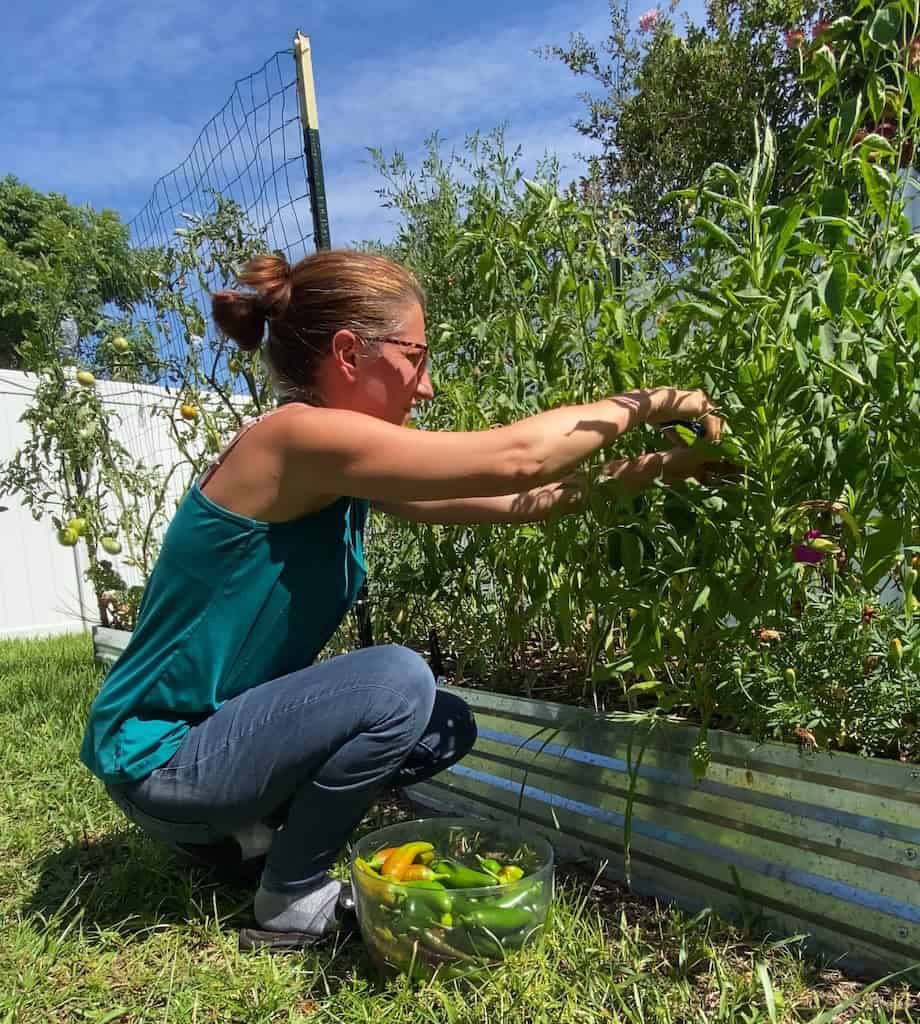Last Updated on January 12, 2024 by Homegrown Florida
It’s sweet potato harvest time, and I thought it’s the perfect moment to reflect on how we achieved such a bountiful sweet potato harvest. Let’s take a journey from start to finish on how to grow sweet potatoes, or for the sweet potato purists, let’s call it from slips to tubers.
Years ago, when I was a beginner gardener, sweet potatoes became the first crop that provided a year’s supply of food for my family. Growing sweet potatoes opened my eyes to the idea of self-sufficiency in gardening, especially given how easy they are to grow. Now, let’s dive into the comprehensive process of growing sweet potatoes.
1. Growing Slips
Sweet potatoes are not grown like regular potatoes. They belong to different plant families. You can’t grow sweet potatoes from a piece of the potato itself; instead, you grow slips. The easiest way to start slips is to get an organic sweet potato. Plant it on its side in the soil, leaving some of it exposed above ground. Water it regularly, and soon you’ll see sprouts. Once the sprouts, or slips, are about six inches long, break them off the potato. Let them grow roots in a cup of water, and then plant them outside.

2. Planting Slips
Prepare a well-aerated bed with fluffy soil. Lay down compost and a thick layer of mulch. Plant the slips by poking a hole about 4 inches deep and sliding the slip into it. Plant them when the night temperatures consistently reach above 60 degrees Fahrenheit. Water them daily until they adjust, then switch to weekly watering. Sweet potatoes thrive in heat, making them ideal for hot and humid summers.
3. Minimal Maintenance
Sweet potatoes don’t require fertilizing or pest management once established. Grass clippings can be added as mulch to feed the soil. You can push the vines back into the bed as they grow; there’s no need to trim them. The vines might attract pests, but it doesn’t significantly affect the yield.
4. Harvesting
The challenge is knowing when sweet potatoes are ready since the plant doesn’t die out like regular potatoes. Dig down at the base and pull one up to check its size. Harvest when they reach your preferred size. You can pull them as needed or wait until you see them poking out of the ground for a giant harvest.
5. Curing
Cure sweet potatoes by laying them in a humid, dark, and hot place for about two weeks. My garage tends to be the perfect spot for me. Avoid washing off the dirt during this period. After curing, store them in a paper bag at room temperature. They should keep for a year.

6. Handling Vines
Instead of composting sweet potato vines, use them. Clip off the leaves, blanch, and freeze them. Alternatively, bury the vines under wood chips or heavy mulch in the same bed for another round of sweet potato growth. Be sure to save a potato or two for making slips next season.
This year, I harvested 30 pounds of sweet potatoes from just one bed. The average American consumes about six to seven pounds per person annually so this was enough to feed not only my family, but also my extended family and friends.


